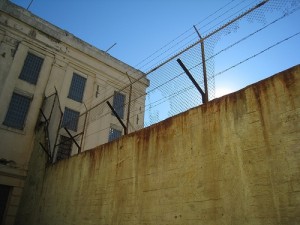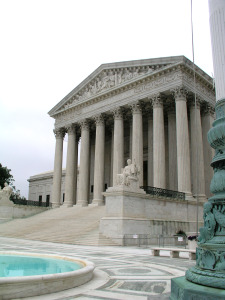By: Nick Christopherson
Travis Scott’s recent Astroworld music festival drew an estimated 50,000 fans to NRG Park in Houston on Friday, November 5.[1] Beginning in 2018, with the release of Scott’s new album, Astroworld, the annual music festival was an immediate hit and solidified Scott as an A-list celebrity for years to come.[2] The concert series has gained incredible momentum since its debut, and following a Covid-mandated cancellation in 2020, fans, artists, and industry ticket promoters arrived anxious to resume the music in 2021.[3]
However, the festivities came to a crashing halt after a crowd surge crushed hundreds of fans at the front of the pit.[4] Hundreds suffered injuries from asphyxiation—a lack of oxygen due to the pressure of the crowd—which caused many to fall unconscious or suffer heart attacks.[5] Hundreds were transported to the hospital, and eight died.[6] People described the scene as “a concert from hell” as bystanders performed CPR on strangers, ambulances wove in and out of the crowd, and people screamed “I can’t breathe.”[7] During the chaos, Travis himself continued performing, only stopping briefly to crowd surf an unconscious fan to safety before resuming his raucous act.[8]
So far, more than ninety civil actions have been filed over the incident naming Live Nation, Scott, and other artists who performed at the event as defendants.[9] One complaint alleges that Scott and Live Nation failed “to provide a safe environment at the Astroworld Festival . . . to provide adequate security . . . to adequately hire medical personnel . . . [and] to adequately respond to recurrent medical issues.”[10] The complaint further alleges gross negligence, claiming that defendants “knew, or had reason to know, of an unreasonable and foreseeable risk of harm to Plaintiff.”[11] But who is really to blame in this tragedy? And how should the law change to prevent this type of accident in the future?
Fortunately, a number of crowd crush cases exist to guide courts’ analyses in this matter.[12] When analyzing a negligence claim, a court will consider if the defendant had a duty to act reasonably, then a jury will determine whether the defendant breached this duty, whether the defendant’s breach was the “but for” cause of the plaintiff’s injury,[13] and whether a defendant’s actions were sufficiently linked to the plaintiff’s injury so as to find the defendant liable.[14]
Duty and “but for” causation are easy to establish. Plaintiffs can establish duty because, in tort law, business owners owe paying customers (such as sporting fans, concertgoers, or event attendees) special protections from unreasonable dangers.[15] The Restatement (Second) of Torts addresses crowd security in § 344 which states:
A possessor of land who holds it open to the public for entry for his business purposes is subject to liability to members of the public while they are upon the land for such a purpose, for physical harm caused by the accidental, negligent, or intentionally harmful acts of third persons or animals, and by the failure of the possessor to exercise reasonable care . . .[16]
Due to the obvious applicability of this rule, duty is rarely litigated over in crowd crush cases.[17] Similarly, plaintiffs can also easily satisfy the requirement of “but for” causation in the Astroworld case because “but for” the concert’s existence, people would not have been crushed by a crowd.
The elements of breach and proximate causation are more difficult to predict. In determining breach, juries determine whether the defendant acted reasonably—whether defendant’s actions were similar to those of a reasonable person under the circumstances. Plaintiffs can prove this element by showing that the defendant failed to “guard customers, patrons, and other invitees from injury by either a crowd or one of its members through the use of ushers, guards, or other attendants, or by means of physical devices such as barricades, ropes, or railings.”[18]
There are conflicting views as to whether the defendants acted reasonably. On the one hand, the court-ordered investigators noted that “organizers added stronger fencing, more barricades, additional space for crowd control, and more security personnel, in light of the crowd control issues at the 2019 Astroworld show.”[19] On the other hand, the event’s fifty-six page security and emergency response plan failed to account for the occurrence of a crowd surge.[20] Nor did the organizers call off the show despite hundreds of people breaking through the concert gates earlier in the day.[21] Due to these conflicting facts, it is hard to predict whether a jury will find the organizers’ efforts to have been reasonable.
But the real lynchpin of these future lawsuits will be proximate causation,[22] which many courts determine by asking the jury to consider whether the plaintiff’s harm was foreseeable.[23] Foreseeability will be hard for both Scott and Live Nation to refute. For Scott, the artist has a history of producing violent and chaotic shows.[24] In 2015, Scott was arrested at his own concert in Lollapalooza for the charge of “inciting a riot.”[25] He was arrested two years later, in 2017, at the Walmart Arkansas Music Pavilion under the same charge.[26] In another concert, Scott spit and yelled at an audience member thought to have stolen Scott’s shoe, telling the crowd to “Get that b*tch” and to “F**k him.”[27] The artist has also encouraged fans to “rage” at his concerts and to create an atmosphere that mirrored the chaos of the World Wrestling Federation.[28] Based on this conduct, a jury will likely find fans’ injury foreseeable in the Astroworld case.
Live Nation should also have foreseen concertgoer injury. In 1979, eleven concertgoers were killed from a crowd surge similar to the one at Astroworld.[29] The source of the problem was determined to be “festival seating,” or general admission seating.[30] After the tragedy, Cincinnati city council banned festival seating at any venue in its jurisdiction, but the ban was lifted some twenty years later to accommodate the preferences of Bruce Springsteen.[31] Further, Live Nation need not look beyond its own history to see the problems with general admission seating. The Houston Chronical published that Live Nation has been connected to roughly 200 deaths and at least 750 injuries since 2006.[32] In fact, the company’s annual report lists “variability in venue security standards and accepted practices”[33] and “unintentional mass casualty incidents”[34] as some of the company’s most significant risks. Because these defendants should have foreseen these injuries, plaintiffs are likely to satisfy the proximate cause element of their claim. Thus, the outcome of these suits will likely be out-of-court settlements with the families of the victims.[35]
Nevertheless, while social media users have been quick to blame Travis Scott and “corporate greed” for this tragic outcome,[36] spectators have overlooked the primary culprit—America’s lack of crowd management regulations. A vast body of research exists on the scientific principles of crowds and their inherent dangers,[37] yet there is virtually no statutory law in the United States regulating crowd management and control.[38] This lack of regulation leaves injured concertgoers with only the long, expensive, and unpredictable remedies involved in a negligence suit. If left to continue, this statutory gap will continue to claim more lives.
[1] McKenzie Sadeghi, Fact check: Post falsely claims Astroworld venue had maximum capacity limit of 20,000 people, USA Today (Nov. 11, 2021), https://www.usatoday.com/story/news/factcheck/2021/11/11/fact-check-travis-scotts-astroworld-maximum-capacity-not-20-000/6357478001/.
[2] Julian Kimble, Travis Scott is one of the most electrifying performers of our time, Wash. Post (Nov. 30, 2018), https://www.washingtonpost.com/entertainment/music/travis-scott-is-one-of-the-most-electrifying-performers-of-our-time/2018/11/30/6462042e-f4c8-11e8-80d0-f7e1948d55f4_story.html.
[3] Ana Gonzalez, AstroWorld Festival 2020 has been postponed, but Travis Scott says event will make a return in 2021, Click 2 Houston (Nov. 18, 2020), https://www.click2houston.com/features/2020/11/18/astroworld-festival-2020-has-been-postponed-but-travis-scott-says-event-will-make-a-return-in-2021/.
[4] Chris Boyette, Travis Scott was previously charged in connection with crowd mayhem, CNN (Nov. 8, 2021), https://www.cnn.com/us/live-news/astroworld-houston-crowd-surge-travis-scott-11-08-21/index.html.
[5] David Goodman & Maria Jimenez Moya, ‘No Way Out’: A Sudden Life-and-Death Struggle at a Houston Concert, N.Y. Times (Nov. 6, 2021), https://www.nytimes.com/2021/11/06/us/travis-scott-crowd-surge.html.
[6] Id.
[7] Cam Tyeson, A Horrifying Eyewitness Account From Travis Scott’s Astroworld Disaster Called it a ‘Concert in Hell,’ Pedestrian TVK (Nov. 6, 2021), https://www.pedestrian.tv/news/travis-scott-astroworld-eyewitness-account/; Tiffany Huertas, ‘I can’t breathe’: San Antonio woman describes chaos at Travis Scott concert, KSAT (Nov. 8, 2021), https://www.ksat.com/news/local/2021/11/08/i-cant-breathe-san-antonio-woman-describes-chaos-at-travis-scott-concert/.
[8] Mark Savage, Travis Scott festival tragedy: Were warning signs missed at Astroworld, BBC News (Nov. 9, 2021), https://www.bbc.com/news/entertainment-arts-59205840.
[9] Ray Sancez, Rosa Flores & Ed Lavandera, Deadly Astroworld Festival spiraled out of control for hours, Houston FD logs show, CNN (Nov. 12, 2021), https://www.cnn.com/2021/11/12/us/travis-scott-concert-houston-friday/index.html; Nicolaus Li, Travis Scott Reportedly Facing Over 30 Lawsuits Following Astroworld Tragedy, Hypebeast (Nov. 10, 2021), https://hypebeast.com/2021/11/travis-scott-live-nation-drake-over-30-astroworld-festival-tragedy-lawsuits-info.
[10] Plaintiff’s Original Petition and Application for Temprorary [sic] Restraining Order and Temporary Injunction at 13, Villanueva v. ASM Global, LLC, Courthouse News, https://www.courthousenews.com/wp-content/uploads/2021/11/oscar-villanueva-astroworld-lawsuit.pdf.
[11] Id. at 10.
[12] See, e.g., Pooser v. Cox Radio, Inc., No. 04-08-00270-CV, 2009 WL 200449 (Tex. Ct. App. Jan 28, 2009) (involving plaintiff suing radio station after becoming injured in a standing-room-only section of a concert); Cunningham v. D.C. Sports & Ent. Comm’n, No. Civ.A. 03-839RWRJMF, 2005 WL 3276306, (D.D.C. Nov. 30, 2005) (involving crowd-surge related injuries at an Eminem concert); Prettyman v. Trenton Transportation Co., 73 Pa. Super. 353 (1919). For a full discussion of current crowd crush jurisprudence, see Tracy Hresko Pearl, Crowd Crush: How the Law Leaves American Crowds Unprotected, 104 K.Y. L.J. 1 (2016).
[13] Stuart M. Speiser et al., 2A American Law of Torts §9:3, (Monique C. M. Leahy ed., 2021) (“The essential elements for a negligence or gross negligence claim are: (1) the existence of a duty on the party of the defendant to conform to a specific standard of conduct to protect the plaintiff: (2) breach of that duty by the defendant; (3) injury to the plaintiff actually and proximately caused by the defendant’s breach”).
[14] Id. (stating that “to support a finding of proximate cause, there must be some evidence indicating that a foreseeable injury did in fact result from the negligence”).
[15] See Pearl, supra note 12, at 18. See also Robert Lind et al., Entertainment Law 3d: Legal Concepts and Business Practices § 10:36, Westlaw (database updated 2021) (“The venue owner and operator have a duty to provide reasonably safe means of ingress and egress, a duty to use ordinary care to keep the premises safe, a duty to discover and correct or warn of any dangerous conditions and a duty to protect attendees from negligent activities.”).
[16] Restatement (Second) of Torts §344 (Am. L. Inst. 2021).
[17] See Pearl, supra note 12, at 17.
[18] 8 Frumer & Friedman, Personal Injury Actions, Defenses, and Damages § 42.01 (Matthew Bender, rev. ed. 2015)
[19] Vanessa Romo, Astroworld’s safety plan called for deceased to be referred to as ‘smurfs’, NPR (Nov. 10, 2021), https://www.npr.org/2021/11/10/1054543388/astroworlds-safety-plan-failed-to-say-what-to-do-in-case-of-a-crowd-surge.
[20] Id.
[21] Spencer Kornhaber, The Bleak Lessons of the Astroworld Nightmare, The Atlantic (Nov. 10, 2021), https://www.theatlantic.com/culture/archive/2021/11/astroworld-travis-scott-crowds/620658/.
[22] Steven A. Adelman, Won’t Get Fooled Again: Overcrowding at Concerts Causes Injury and Death—Despite Industry Denials. Don’t Be Fooled: Crowd Crush Cases Turn on Straightforward Questions of Foreseeability and Duty of Care, 40 JUN Trial 18, (2004) (discussing the past issues courts have focused on in crowd crush cases).
[23] See, e.g., Massey v. Jim Crockett Promotions, Inc., 400 S.E.2d 876 (W. Va. 1990) (considering whether it was foreseeable that there would be an altercation as a result of wrestlers and manager provoking the crowd).
[24] See Jack Morphet & Jorge Fitz-Gibbon, Travis Scott concerts known for violence and injuries, reports show, N.Y. Post (Nov. 7, 2021), https://nypost.com/2021/11/07/travis-scott-concerts-known-for-violence-reports-show/.
[25] Jake Woolf, Travis Scott on the Show that’s So Crazy, It Caused a Riot, GQ (May 15, 2017), https://www.gq.com/story/travis-scott-interview.
[26] Id.
[27] Alana Mastrangelo, Video resurfaces of rapper Travis Scott spitting at fan, calling crowd to “F**k Him Up”, GWN (Nov. 8, 2021), https://goodwordnews.com/video-resurfaces-of-rapper-travis-scott-spitting-at-fan-calling-crowd-to-f-k-him-up/.
[28] Rachel DeSantis, Travis Scott Talks ‘Raging’ in Resurfaced Video: ‘Always Wanted to Make It Feel Like It Was the WWF’, People (Nov. 8, 2021), https://people.com/music/travis-scott-talks-raging-in-resurfaced-2015-video/.
[29] Palmer Haasch, Crowd surges like the one at Travis Scott’s Astroworld concert have a long history, Insider (Nov. 11, 2021), https://www.insider.com/crowd-astroworld-crush-surge-travis-scott-concert-festival-disaster-history-2021-11.
[30] Id.
[31] John Fox, Festival Seating Return is Past Due, City Beat (Aug. 14, 2002), https://www.citybeat.com/voices/editorial/article/13022095/festival-seating-return-is-past-due.
[32] Gabrielle Banks, Astroworld promoters oversaw other events where concertgoers trampled fellow fands, broke barricades, Houston Chronicle (Nov. 6, 2021), https://www.houstonchronicle.com/news/houston-texas/article/Astroworld-Festival-concert-producer-has-history-16597508.php.
[33] Live Nation Entertainment, Inc., Form 10-K, 23 (2021).
[34] Id. at 28.
[35] Andy Greene, Lawyers See ‘Huyndreds of Millions’ in Settlements—and Possibly Criminal Charges—in Atroworld Tragedy, Rolling Stone (Nov. 9, 2021), https://www.rollingstone.com/music/music-news/astroworld-lawsuits-liability-travis-scott-1255577/.
[36] See, e.g., Ellen Durney, Travis Scott And Drake Are Being Sued For Negligence And “Inciting The Crowd” At The Astroworld Festival That Killed At Least 8 Fans, Buzz Feed News (Nov. 8, 2021), https://www.buzzfeednews.com/article/ellendurney/travis-scott-and-drake-astroworld-negligence-lawsuits; J.D. Smith, Live Nation, not Travis Scott, caused the Astroworld tragedy, Black Media Daily (Nov. 13, 2021), https://blackmediadaily.com/live-nation-not-travis-scott-caused-the-astroworld-tragedy/ (claiming the tragedy was “a corporate greed issue on the part of Live Nation”).
[37] For example, one study gave a disturbing description of the realities within a crushing crowd:
At occupancies of about 7 persons per square meter the crowd becomes almost a fluid mass. Shock waves can be propagated through the mass sufficient to lift people off of their feet . . . . People may be literally lifted out of their shoes, and have clothing torn off. Intense crowd pressures, exacerbated by anxiety, make it difficult to breathe. The heat and thermal insulation of surrounding bodies cause some to be weakened and faint. Access to those who fall is impossible. Removal of those in distress can only be accomplished by lifting them up and passing them overhead to the exterior of the crowd.
John J. Fruin, The Causes and Prevention of Crowd Disasters, Crowdsafe 3 (2002), https://www.workingwithcrowds.com/wp-content/uploads/2018/02/THE-CAUSES-AND-PREVENTION-OF-CROWD-DISASTERS-by-John-J.-Fruin-Ph.D.-P.E..pdf; Eugene Trivizas, Crowd Dynamics and the Prevention and Control of Collective Disorders, 56 Police J. 142, 143 (1983); John J. Fruin, Crowd Dynamics and Auditorium Management, Crowd Safety & Risk Analysis, Auditorium News (May 1984), https://www.gkstill.com/Support/crowd-flow/fruin/Fruin3.html; Keith Still et al., Place crowd safety, crowd science? Case studies and application, 13 J. of Place Mgmt. & Dev. 4 (2020); Ris S.C. Lee & Roger L. Hughes, Exploring Trampling and Crushing in a Crowd, 131 J. Transp. Eng’g 575 (2005); G. Keith Still, Static Crowd Density (General), Crowd Safety & Risk Analysis, https://www.gkstill.com/Support/crowd-density/CrowdDensity-1.html (last visited Nov. 14, 2021); Dirk Oberhagemann, Static and Dynamic Crowd Densities at Major Public Events, VFDB Technical Rep. (Mar. 2012), https://www.vfdb.de/download/TB_13_01_Crowd_densities.pdf; Anders Johansson et al., From Crowd Dynamics to Crowd Safety: A Video-Based Analysis, 11 Advances in Complex Sys. 497 (2008).
[38] See Pearl, supra note 12, at 1.













